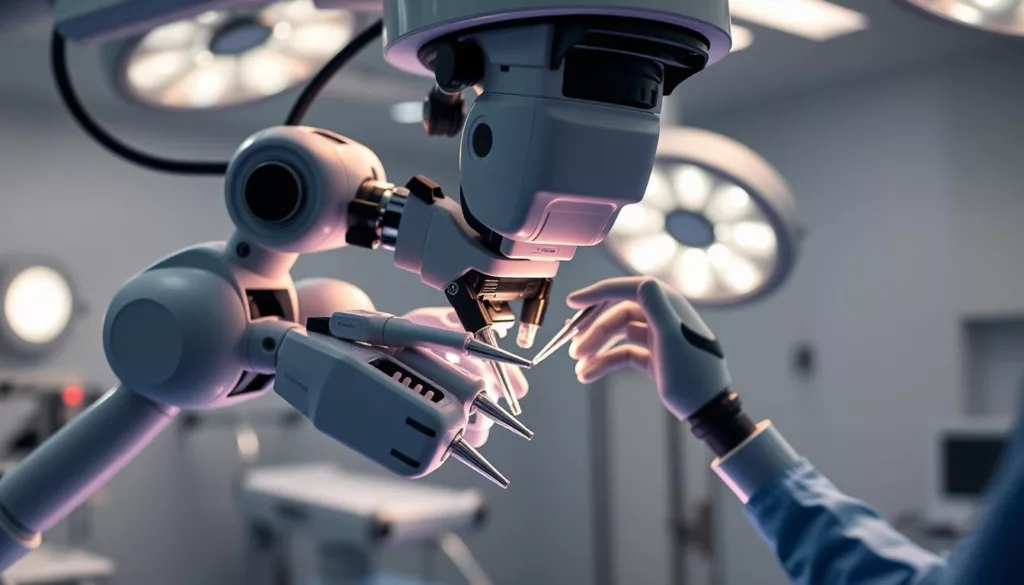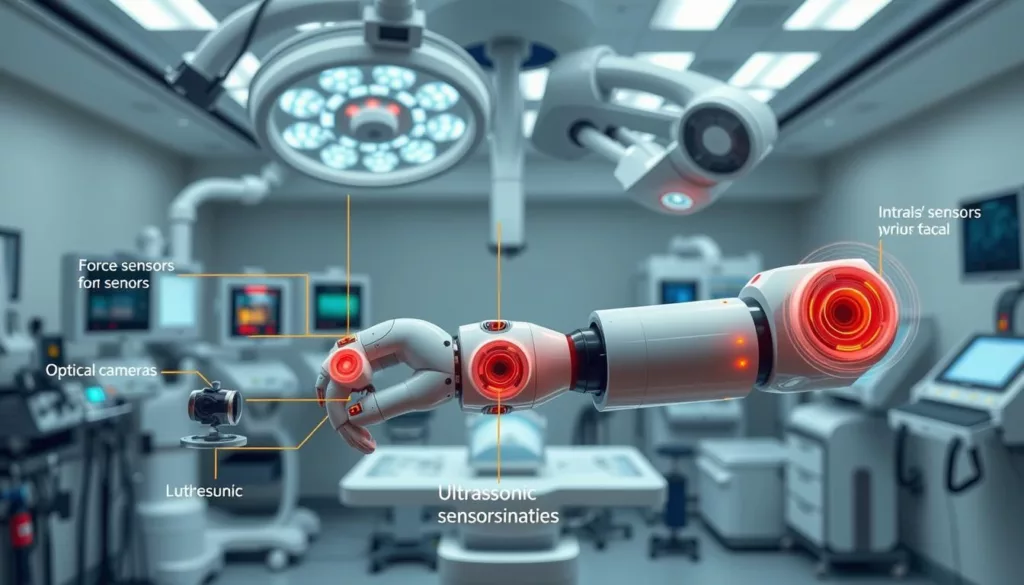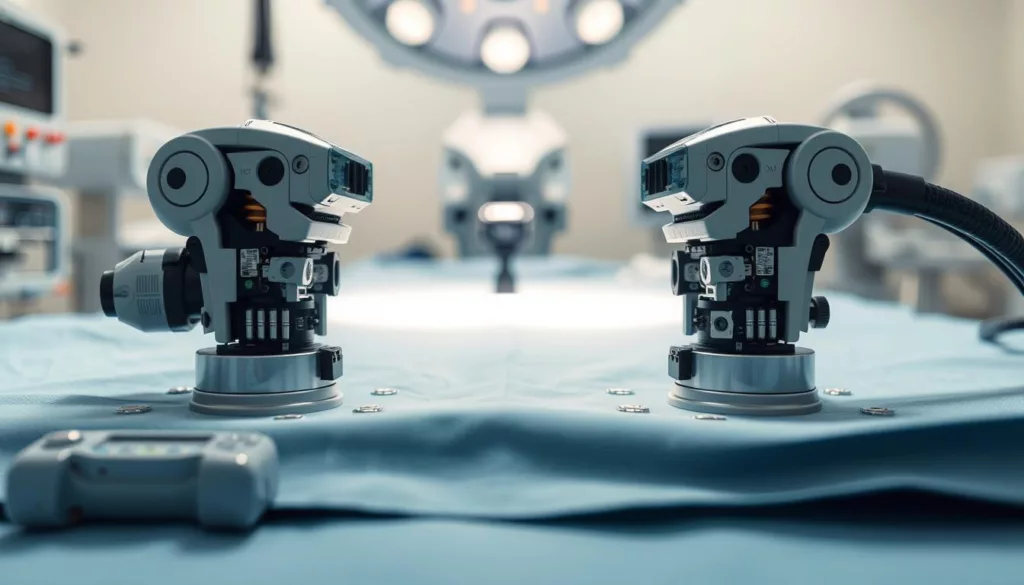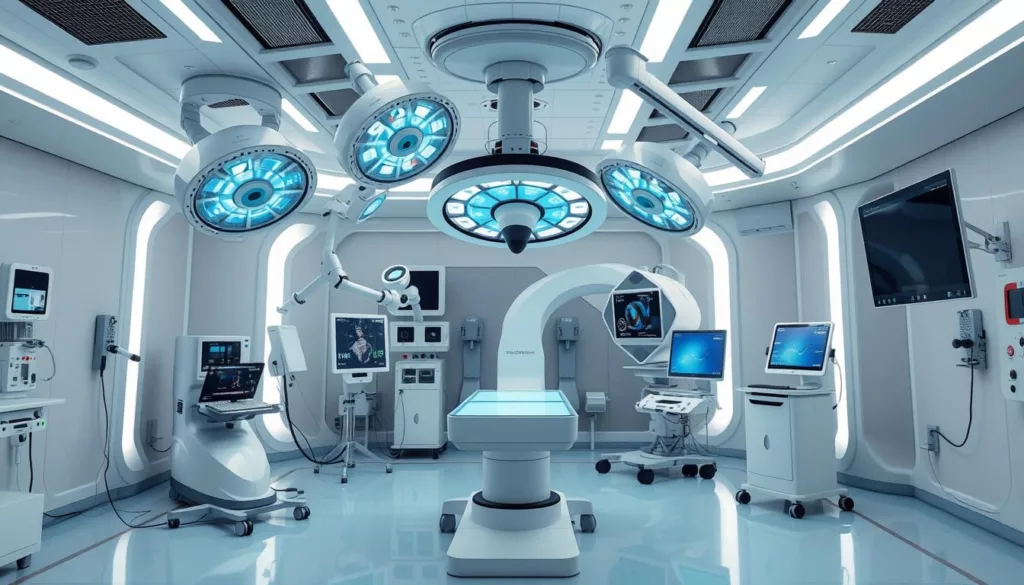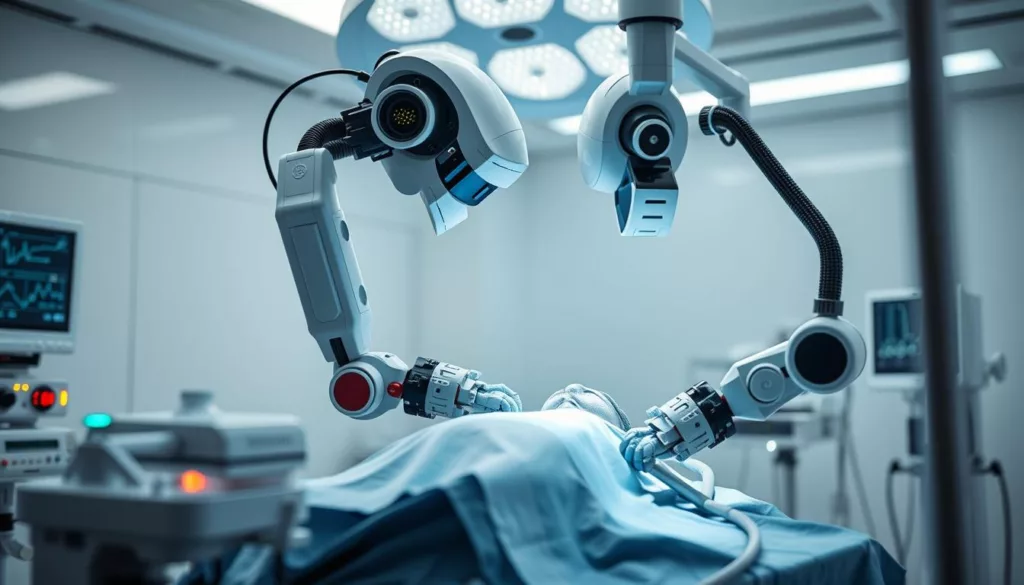In healthcare, there’s a growing need for cost-effective robotic surgery sensors. Hospitals want to do better surgeries but keep costs low. Affordable sensors are key to this goal. At XJCSENSOR, we focus on creating high-quality, custom sensor solutions. We bring the latest technology to help save money in healthcare. Our innovations offer budget-friendly options for robotic surgery sensors. This improves patient care too. Find out how surgical robotics can be cost-effective by reading this blog post. Also, see our solutions at XJCSENSOR.
Key Takeaways
- The demand for affordable robotic surgery sensors is increasing in healthcare.
- Advanced sensor technology improves surgical outcomes while reducing costs.
- XJCSENSOR focuses on providing customized sensor solutions.
- Investing in innovative sensor options can support budget management for healthcare facilities.
- Cost-effective solutions enhance patient care without compromising quality.
Understanding the Importance of Robotic Surgery Sensors
Robotic surgery sensors play a crucial role in modern medicine. They make robotic surgical systems precise. These sensors have transformed how surgeons operate in various fields.
Key Components of Robotic Surgery Systems
There are key parts that make these systems effective. First, vision sensors give real-time images. This helps surgeons see better during surgery. Then, force sensors measure pressure, making surgeries safer and more accurate. Last, position sensors keep robot movements precise, maintaining alignment. These parts work together, showing how important they are in robotic surgeries.
Benefits of Advanced Sensor Technology
Advanced sensor technology greatly improves surgeries. It leads to better accuracy and less risk for patients. This means people recover faster. It also makes surgeries more efficient, saving time. This helps hospitals use their resources better. Using this technology shows a dedication to taking good care of patients. For more insight, read this detailed analysis on these medical breakthroughs.
Types of Sensors Used in Robotic Surgery
In robotic surgery, sensors are key to better surgeries. They help make surgeries precise and effective. Let’s look at the main sensors used: vision, force/tactile, and position sensors.
Vision Sensors
Vision sensors play a big role in robotic surgery. They give real-time pictures that help surgeons see the area they are working on better. These images are clear and detailed, helping to spot important body parts. This is crucial for surgeries needing high accuracy.
Force/Tactile Sensors
Force/tactile sensors are very important for safe and effective robotic surgery. They measure how much force is used on body tissues. This feedback is helpful. It lets surgeons know if the force they use is just right, avoiding harm to nearby tissues.
Position Sensors
Position sensors make robotic surgery even more precise. They keep track of where surgical tools are at all times. This ensures that movements during surgery are exactly right. By doing so, they make surgeries more successful and reduce mistakes.
Factors Influencing Sensor Costs in Robotics
Understanding the factors that affect sensor costs in robotics is key for healthcare facilities. These elements can change how much robotic surgery sensors cost. Let’s look at the main factors, such as research and development, manufacturing, and sensor maintenance.
Research and Development Expenses
Research and development are crucial in setting sensor prices. The push for new technologies leads to better, safer surgery sensors. Though costly at first, these advances pay off by improving surgical care.
Manufacturing and Material Costs
Producing sensors involves various steps from getting raw materials to actual creation. Using high-quality materials increases the price. However, the right materials boost durability and performance. A good supply chain helps keep sensors affordable.
Calibration and Maintenance Requirements
Calibration makes sure sensors work right, vital in surgeries. Also, keeping sensors in good shape costs more but is important. Regular care keeps them working longer. For tailored solutions, check out sensor options from manufacturers.
Leading Brands in Affordable Robotic Surgery Sensors
The field of robotic surgery is growing fast, making it key to know about affordable sensor brands. These brands focus on creating innovative yet cost-effective sensors. They play a big role in the market.
Overview of Major Manufacturers
Several big companies make sensors for robotic surgery. Here are some well-known names:
- Intuitive Surgical – Known for innovative and high-quality sensors.
- Stryker – Provides a broad selection of sensors for different surgeries.
- XJCSENSOR – A top supplier of force sensors, recognized for accuracy and reliability.
- Medtronic – Uses advanced sensor tech in its robotic systems.
Comparative Analysis of Cost-Effectiveness
When looking at robotic surgery sensors’ value, consider price, performance, and how long they last. See this table for a comparison:
| Manufacturer | Average Price (USD) | Performance Rating (1-5) | Durability (Years) |
|---|---|---|---|
| Intuitive Surgical | 25,000 | 4.8 | 7 |
| Stryker | 20,000 | 4.5 | 6 |
| XJCSENSOR | 15,000 | 4.6 | 5 |
| Medtronic | 22,000 | 4.7 | 6 |
This table shows different options for healthcare places looking at affordable sensors. It shows that good solutions exist that fit budgets without sacrificing performance.
Innovative Materials Driving Cost-Effective Solutions
The integration of innovative materials is rapidly changing robotic surgery sensors. These advancements allow for more efficient, lighter, and cost-effective devices. This is great news for healthcare providers. Let’s dive into the latest breakthroughs that are making a big difference in robotic surgery sensors.
Advancements in Sensor Materials
The use of advanced materials is transforming sensor performance significantly. Here are the key advancements:
- High-performance composites: These materials boost durability and sensitivity. This improves accuracy in surgeries.
- Flexible substrates: Flexible materials make sensors more adaptable. This helps in achieving intuitive robotic movements.
- Nanomaterials: Nanotechnology enhances sensor sensitivity and response. This makes surgeries safer and more efficient.
Role of 3D Printing in Reducing Costs
3D printing is revolutionizing robotic sensors. It enables customized solutions while cutting costs. Here are its benefits:
- Rapid prototyping: This allows for quick design changes. It leads to faster development and market introduction of sensors.
- Material efficiency: 3D printing reduces waste. It uses just the right amount of material for each part of a sensor.
- Customization capabilities: This allows for tailored designs. Healthcare providers get sensors that fit their needs without huge costs.
Successful Case Studies in Cost-effective Sensor Applications
Many hospitals have started using affordable sensors in robotic surgery. These case studies show how these hospitals have seen real benefits. They’ve made their operations better by using cost-friendly tech.
The positive changes in the way they work highlight the power of these sensors. They make things run smoother and more efficiently.
Hospitals Leveraging Affordable Sensors
Worldwide, some hospitals are ahead in using low-cost sensors for robotic surgery. They’ve seen big improvements in how patients recover and how the hospital works. Highlights include:
- Hospital A implemented low-cost force sensors, resulting in improved precision during surgeries and a notable reduction in patient recovery time.
- Institution B adopted a new vision sensor technology, enhancing image clarity, which facilitated quicker decision-making during critical surgical moments.
- Facility C focused on position sensors, which increased the accuracy of robotic movements, lowering complication rates markedly.
Impact on Surgical Outcomes and Efficiency
The role of sensors in improving surgery is huge. By using advanced yet affordable sensors, hospitals get lots of benefits.
- Shorter operation times, leading to increased patient throughput and better utilization of resources.
- Reduced complication rates, which translates into lower hospitalization costs and improved patient satisfaction.
- Enhanced training opportunities for surgical teams, allowing them to familiarize themselves with real-time data and analytics driven by these sensors.
| Hospital Name | Type of Sensor Used | Improvement in Surgical Outcomes | Efficiency Gains |
|---|---|---|---|
| Hospital A | Force Sensors | Decreased recovery time by 30% | Increased patient throughput by 15% |
| Institution B | Vision Sensors | Improved image clarity and decision-making speed | Reduced operation time by 20% |
| Facility C | Position Sensors | Lowered complication rates by 25% | Optimized surgical workflows |
Future Trends in Robotic Surgery Sensors
Looking into the future of robotic surgery, we see exciting advancements. These improvements promise to make surgeries safer, more effective, and better integrated with robots. This glimpse into the future helps us see how medical tech will keep evolving.
Predictions for Sensor Technology Developments
The next steps for sensor tech look very promising. We anticipate:
- Improved detection capabilities that provide instant feedback during surgery.
- Enhanced connectivity for better communication between sensors and tools.
- Advanced machine learning algorithms making sensors quicker to adapt.
The Shift Towards Miniaturization and Integration
We’re moving towards making robotic sensors smaller. This move is significant for the industry. Smaller sensors mean robots can do their jobs better and take up less space. This change leads to several benefits:
- More compact designs enable work in small areas during surgery.
- Reduction in manufacturing costs by using lighter materials.
- Integration with robotic platforms for sensors doing more at once.
Strategies for Healthcare Facilities to Reduce Costs
Healthcare facilities often struggle with keeping costs down while still offering top-quality services. They can greatly cut down on expenses, especially with robotic surgery sensors, by using smart strategies. Two good strategies are bulk purchases and working with tech startups.
Bulk Purchase Agreements
By buying sensors in large quantities, healthcare places can get them cheaper. They use their buying power to get better deals and extra discounts from producers. Benefits of bulk buying include:
- Spending less per item by buying more at once.
- Better control over the supply chain, making sure sensors are always available.
- Making the buying process simpler, saving time.
Collaboration with Tech Startups
Teaming up with tech startups is another smart move. Startups focus on making the latest sensor tech for robotic surgery. This gives healthcare facilities access to new solutions that older companies might not have. Advantages of working with startups:
- Getting to use new ideas that improve sensor functions.
- Sharing costs can make developing these sensors cheaper.
- Being more flexible and quick to adopt new tech trends.
Conclusion: Navigating the Future of Robotic Surgery Sensors
In this article, we’ve looked at low-cost options for robotic surgery sensors. We’ve seen how important they are for bettering surgeries and making operations more efficient. For healthcare facilities watching their budgets, choosing the right sensors is key.
Knowing about the different sensors, what they do, and the top brands helps. This knowledge lets healthcare leaders make smart choices when buying sensors.
Summary of Cost-effective Options
Advancements in materials and manufacturing are lowering costs in robotic surgery. Plus, real success stories show the value of using affordable sensor tech. These points highlight a bright future for robotic surgery sensors where better features don’t have to mean higher costs.
Call to Action for Healthcare Decision-Makers
Healthcare leaders should look for new partnerships and tech that fit their budgets but still offer quality care. By choosing these budget-smart options, they can boost their surgery tech. The future of surgery sensors holds great promise. With the right strategies, healthcare can become more efficient and effective.

